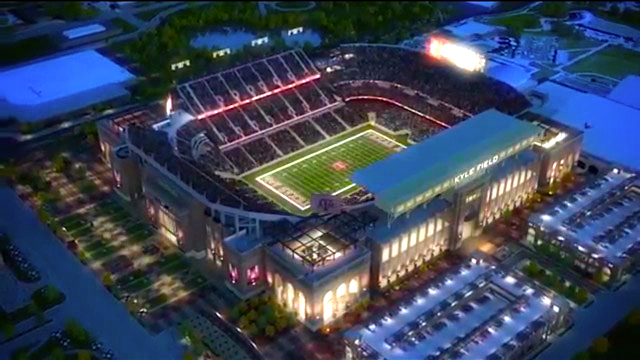
Kyle Field of the future. (TexAgs.com)
Texas A&M is off to a fine start in the SEC, thanks to its new head coach, up-tempo offense and freewheeling, Heisman-wielding quarterback. Long-term, though, keeping pace on the field in college football's most competitive conference means keeping pace in the ever-escalating facilities race, and A&M put its new brethren on notice again this week by unveiling the first renderings of a four-year, $400-million-plus overhaul that could make Kyle Field the most imposing venue in the league.
The previews were leaked to several A&M-obsessed outlets via the athletic department's fundraising arm, the 12th Man Foundation. The colony of bats that calls the stadium home during football season could not be reached for comment.
 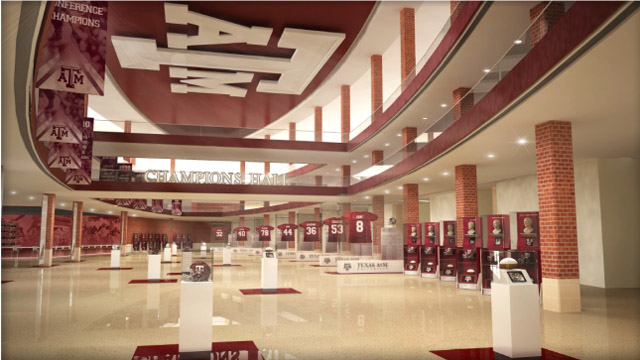 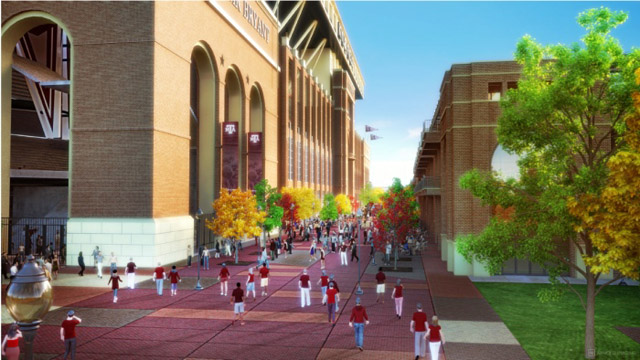 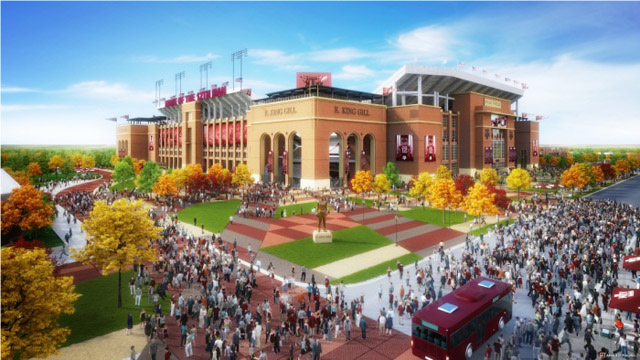 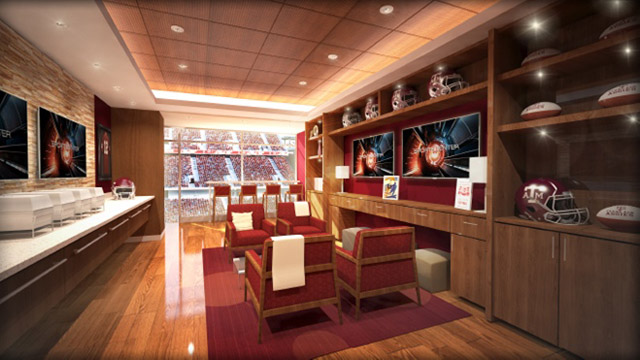 Click for full-size photos. (For more, see TexAgs.com) |
The university opened bidding for the renovations last November, after TAMU System chancellor John Sharp presented a three-year plan in September that pegged the new capacity, currently at 83,000, at somewhere between 93,000 and 103,500. (The latter number would surpass Tennessee's Neyland Stadium, capacity 102,455, as the largest in the SEC.) At the time, Sharp's plan estimated the cost at $425 million to $450 million through bonds and private donations to the 12th Man Foundation, though no official price tag has been determined. The Student Government Association held a referendum on Wednesday to gauge opinion about raising student fees to help pay for the construction.
Initial plans call for the enclosure of the south end zone (currently open) by two levels: On the upper level, 12,000 new seats with the potential for adding more in the future; on the lower level, space reserved for "an area for press, interviews, 12th Man Productions, computer operations, football locker room and recruiting room." In addition to the expanded capacity, construction will reportedly involve demolition of the entire west side stands and press box, as well as parts of the east side to make way for private suites and two existing buildings near the stadium. The field will also be lowered approximately seven feet and moved approximately 18 feet to the south, to allow room for additional seating.
Work is set to begin next winter, after the final 2013 home game, and continue in phases through August 2016. Each phase is scheduled to be completed in an eight-month window over the offseason so as not to interfere with home games in the fall.
The project is a joint venture between two Houston-based companies, Manhattan Construction Group and Vaughn Construction, which were awarded the contract over six competing bids in December. In the last decade, the Manhattan Group has overseen the construction of two of the marvels of modern sports architecture, Reliant Stadium in Houston and Cowboys Stadium in Arlington, and is also handling construction of a new on-campus stadium for the University of Houston, set to open in August 2014 on the now-former site of the Cougars' old venue, Robertson Stadium. Vaughn Construction says it's overseen 45 projects for the Texas A&M University System on eight campuses, at a combined cost of more than $600 million.
No word on whether the remodeled exterior will continue to boast bogus championships.




















